What is a Home Inspection
A standard home inspection is a visual examination of the
physical structure and major interior systems of a house, similar to a physical
exam performed by a doctor.
The purpose of a home inspection is to help prospective
buyers and their mortgage lenders understand any issues so they can negotiate
or plan for repairs and/or replacements.
However, a home inspection should not be confused with an
appraisal, warranty evaluation, building code inspection, any kind of guarantee,
and/or an insurance policy on the condition of the property.
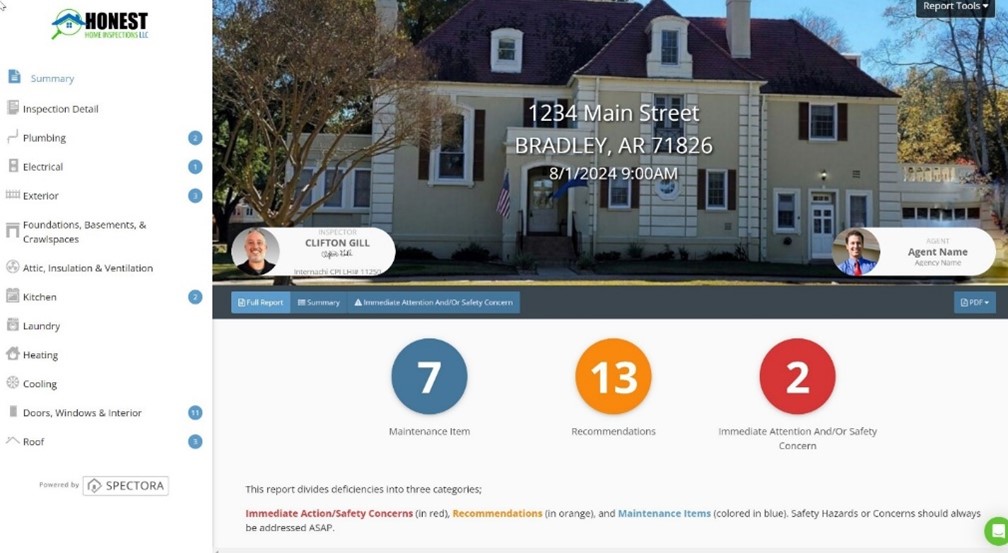
What is included in a home inspection?
During a home inspection, the inspector will check the readily accessible exposed portions of the structure of the home, including the roof, attic, walls, ceilings, floors, windows, doors, basement and foundation, as well as the heating/air conditioning systems, plumbing, electrical systems, and the exterior for potential problems. In Louisiana, your report will also contain technical descriptions of the home’s systems.
Try to remember, a home inspection is not intended to point out every small problem or invisible/latent defect in a home. Most minor or cosmetic flaws, for instance, should be apparent to the buyer without the aid of a professional.
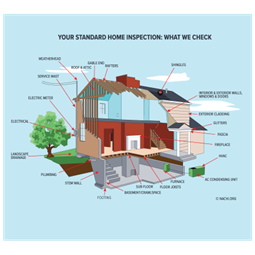
Why get a home inspection?
The purchase of a home is one the largest single investments most people ever make. Therefore, it is extremely important that you learn as much as you can about the condition of the property and the possible need for any major repairs before making the purchase. A detailed home inspection helps minimize the possibility of unpleasant surprises, unexpected costs and post-purchase headaches or regrets.
A reputable home inspector will also point out the positive aspects of a home, as well as recommended maintenance items needed to keep it in good shape. A good home inspection will give you a much clearer understanding of the property you are about to purchase, giving you confidence and peace of mind.
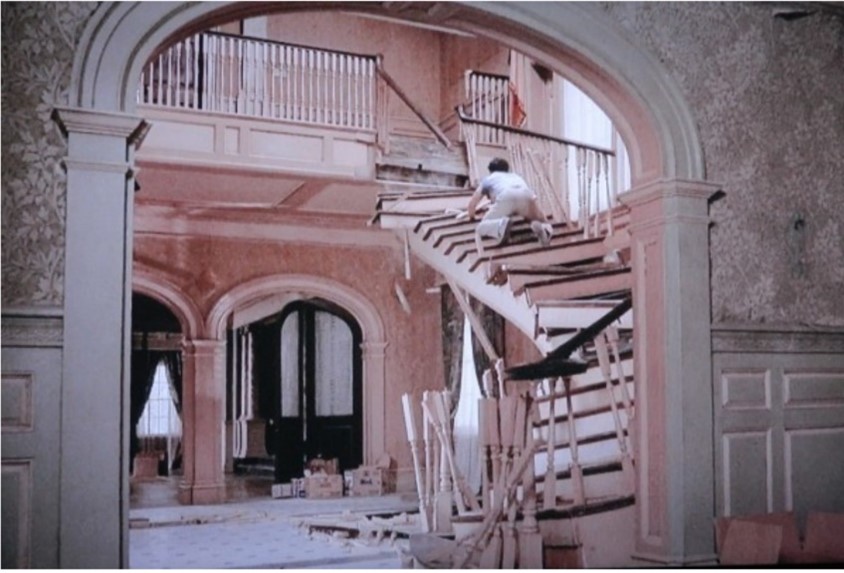
How Long Does A Home Inspection Take?
The size and complexity of the home usually affects the
amount of time it takes, as well as the inspector chosen. While some inspectors spend 2 to 3 hours on
average at each inspection; other inspectors spend 4 to 5 hours inspecting an
average size home. For a more accurate
estimate, ask the inspector performing the inspection.
What's the difference between a home inspection and an appraisal?
Home inspectors and appraisers both examine homes, but they
have different jobs to perform:
Home Inspectors
Home inspectors focus on the function and condition of everything interior and exterior. Inspectors determine if each appliance appears to be working properly or not, including water heaters and HVAC units. They look for safety concerns, and signs of wear and tear. Inspectors identify areas that may need repair. Home inspections are typically requested by the buyer, but lenders may require them as part of a mortgage application.
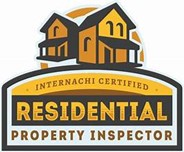
Appraisers
Appraisers determine the property value by considering the condition, appearance, and comparable sale prices. They make observations, but don’t look for issues that need repairs or examine problems that aren’t visible. For example, if an appraiser doesn’t see anything wrong with the HVAC system, they’ll typically assume it’s working properly. Appraisals are usually required by lenders in order to confirm that the buyer’s purchase price is reasonable.
How much does a home inspection cost?
The typical fee for a home inspection varies based on what
area the home is in. Other cost factors
include the size and features of the house, its age, and additional considerations such as mileage. For more pricing information, visit our home inspection pricing and service area page.
If you’re comparing inspection prices, it’s very important to remember that the lowest-priced inspector is often NOT the best choice. The inspector’s reputation, qualifications, including his or her experience, training, professional affiliations, and their LSBHI licensing should also be checked. For more information about my affiliations and training, visit the About Us page.
What is a home
inspection contingency and how does it work?

A home inspection contingency is a clause in the offer to purchase that gives a potential Buyer the right to inspect the property. The contingency clause allows a Buyer to make sure the home is in good condition before finalizing and closing the deal. Home inspection contingencies are typically used to protect the Buyer.
A typical home inspection contingency says that if something big turns up in the inspection report (something that the Buyer isn’t able to pay to repair or something that changes the way they feel about the house) the Buyer can leave the transaction and keep the earnest money deposit. If the Buyer wants to break the contract instead of negotiating with the seller for a resolution, the issues with the home should be significant.
The Seller may be open to negotiation, in order to prevent the Buyer from walking away from the deal. However, it is important for a Buyer to remember that the Seller isn’t obligated to enter into negotiations after the home inspection. In areas with a hot Seller’s market, most Sellers are resistant to renegotiating after the home inspection based on the findings.

An inspection contingency is still necessary when buying a new home. In new construction, home inspectors usually inspect the foundations before they are poured, then check the structure before the drywall is added, and finally they perform another inspection when the home is completed.
However, remember that these are building officials who work for the Parish (County) or the city, so it’s unlikely they will be as thorough as a home inspector that works directly for the Buyer.
Often builders may not allow a home inspection contingency with the ability to terminate a sale. This is common since few contractors would want to agree to custom-build a home when the Buyer has the opportunity to cancel. However, getting an independent home inspection with new construction is still usually worth it, since you could use the inspection to create a punch list. Punch lists are very important, since there are time limits in Louisiana’s New Home Warranty Act.

Misc. Home Inspection Facts & Figures
- Nearly 90% of buyers include contingencies in their offer.
- According to inspectionsupport.com, 86% of home inspections find issues that need fixing. Common issues include:
- Roof: 19.7%
- Electrical: 18.7%
- Windows: 18.4%
- Gutters: 16.9%
- Plumbing: 13.6%
- According to Angie’s List, homebuyers who use a home inspection to negotiate can save an average of $14,000. In fact, most buyers include an inspection contingency and up to 46% of homebuyers negotiate after an inspection.
- View Louisiana’s New home Warranty Act:
How to find the best
home inspector
The best place to start is right here at Honest Home Inspections!
Searching Google for “Home Inspectors Near Me” is another good way to look for a good inspector, since you can usually find inspectors in your area and you can also read their reviews. This allows you to research the inspector. Honest Home Inspections has a 4.9 star rating with over 50 home inspection reviews.
Spectora is also a great source for inspector profiles and client reviews. Check out our 200+
Spectora Reviews.
If I’m not a perfect fit for you, then the Louisiana State Board of Home Inspectors can also help you
locate another LSBHI licensed inspector. LSBHI licensed inspectors are professionally trained, certified,
insured, and they meet high standards for professionalism, expertise and reliability. Your home inspector NEEDS to be licensed and insured, so remember to check.
If you need an inspection anywhere other than Louisiana, check to see if your state requires home inspectors to be licensed. Most states have a Commission or Board with a website you can use to find a licensed inspector.
Real estate agents are usually familiar with reputable home inspectors, and may be able to provide you with a list of names from which to choose.
What do home
inspectors look for? What are some
common issues they find?
Grounds and Exterior Structure

Many inspectors begin with the exterior. Inspectors evaluate the landscaping, drainage, and the integrity of driveways and walkways. They examine the foundation, walls, and siding of the house, looking for signs of damage or structural problems.
Experience and training help inspectors spot issues with the grounds and exterior structure. Inspectors look for common signs of drainage problems, grading issues, or other potential threats to the property’s foundation. For example, inspectors identify cracks in the foundation, signs of wood rot on siding, or structural concerns in retaining walls.
When inspecting the grounds and exterior of a home, home inspectors look for a variety of things, including:
Grading & Drainage
The ground should be sloped away from the foundation. Downspouts should direct water away from the home, and all areas around the home should be allowed to drain. Issues like negative grading and ponding & pooling are concerns commonly found in Louisiana.
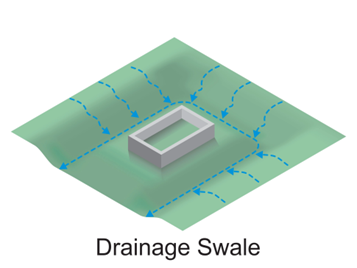
Landscaping & Trees
Trees, vines, and vegetation should not touch or overhang the structure. These can damage the roof
covering, the wall siding, and can also lead to moisture or pest intrusion as well as covering issues up making it harder to spot defects or concerns.
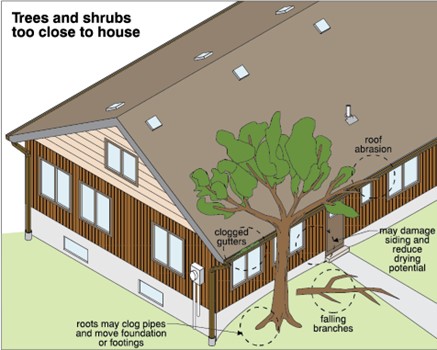
Driveways & Walkways
In North Louisiana minor cracks in driveways are commonplace. Most of the time, these aren’t a significant issue. Having said that, it’s not uncommon to also find major cracks in driveways. Often tree roots lift sections of the driveway, sometimes creating trip hazards. Erosion is another issue that homeowners will eventually have to deal with.
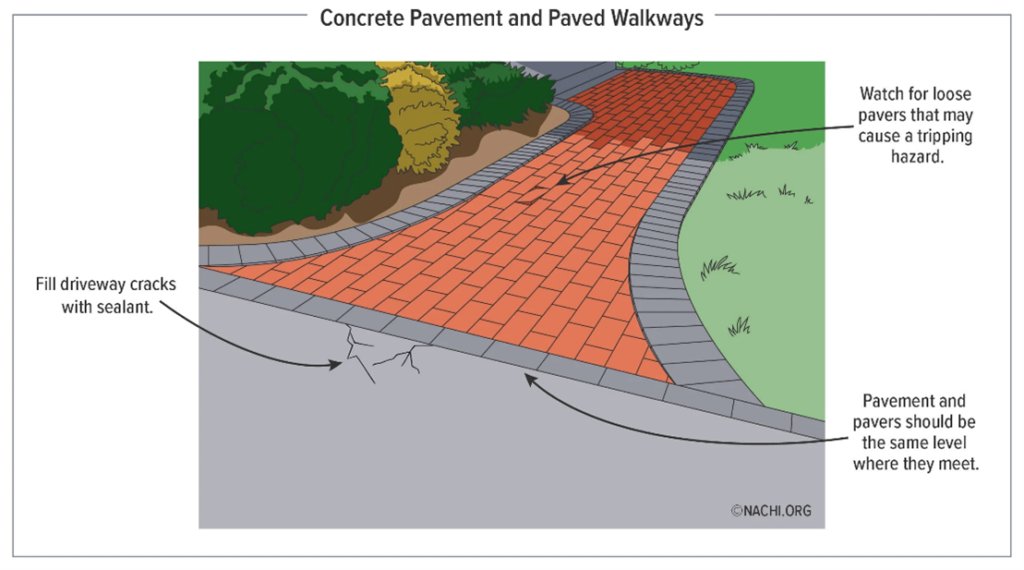
Attached or Detached Buildings
Carports and garages are included in a Louisiana home inspection, but other structures such as tool sheds or pool houses are not included, most inspectors are willing to inspect additional buildings and structures for an additional fee. Fences are not included by the SOPs.
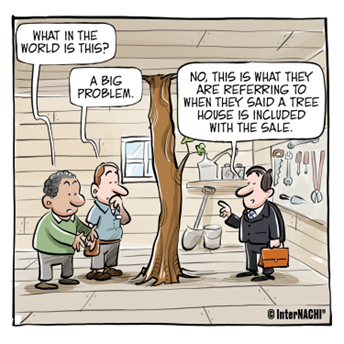
Deck & Stair Railings
Decks and Railings should be secure, and safe. Handrails should be graspable, oriented vertically to discourage children from climbing them, and spaced close enough to prevent children from getting through.

Cracked Foundation & Masonry
Cracked foundations can indicate settlement or movement in the foundation or soil, or excessive moisture or temperature changes.
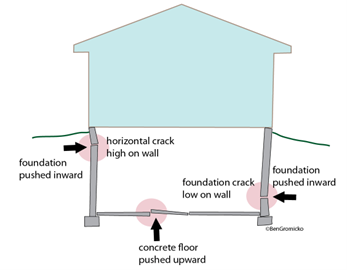
Wood Rot
Wood rot and moisture damage is one of the most common issues found during the exterior inspection.
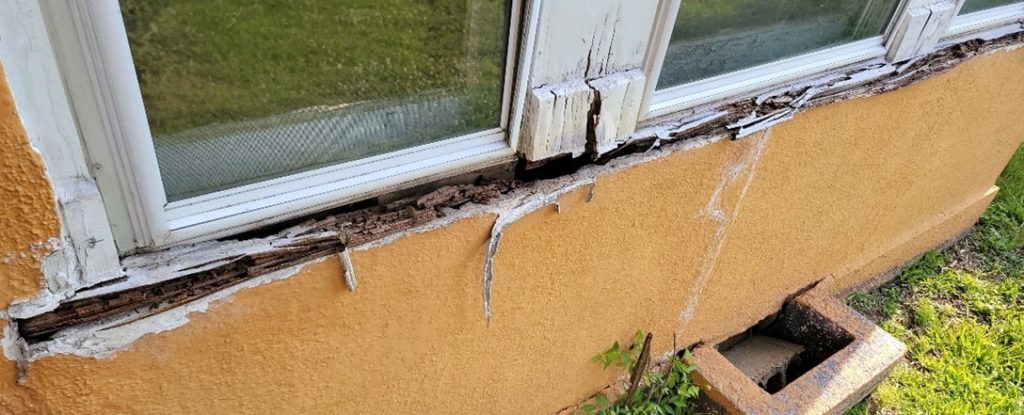
Damaged Wall Siding
Peeling paint, moisture intrusion (especially near the bottom) and impact damage from weed eaters and lawn mowers are common issues.
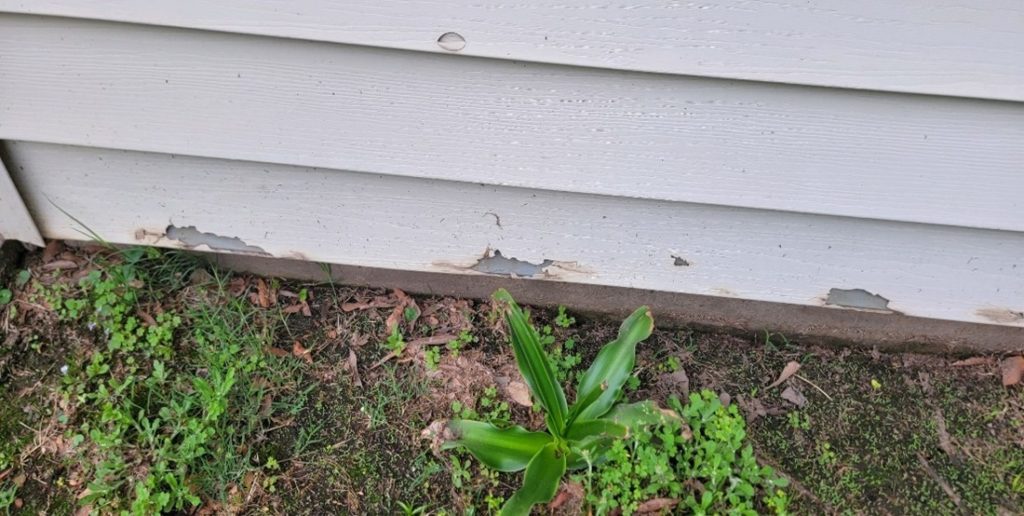
Retaining Walls
These types of walls help protect the home and/or the driveway. Hydrostatic pressure can cause these walls to lean and over time eventually fail.
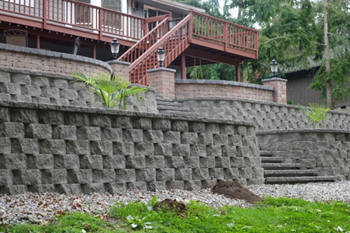
Doors & Garage Doors
Current standards require motorized garage doors to be equipped with 2 safety features. An auto-reverse feature helps prevents the door from accidentally closing on people, pets, or property. The door should also have electric eyes. Doors that don’t latch or lock properly, and moisture damage at the bottom of door frames are common issues.
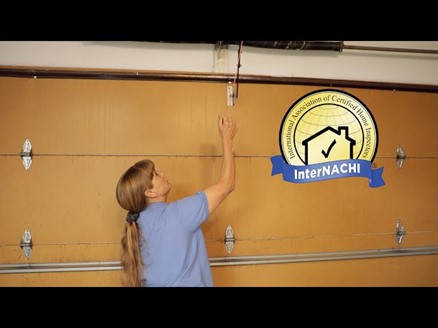
Eaves and Soffit
Inspectors check the areas that are visible from the ground. When drip edge is missing or hasn’t been installed correctly, there is often moisture damage at the soffit. Pest damage and intrusion from birds or squirrels is also common in these areas.
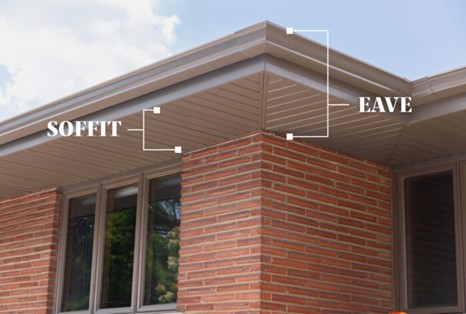
Decks, Balconies & Porches
Inspectors check the structure, piers, attachment, and flashing on decks, balconies and porches. They look for signs of failure, settlement, and moisture damage. Possible wood destroying insect damage and deteriorated paint or stain are common issues in these areas.
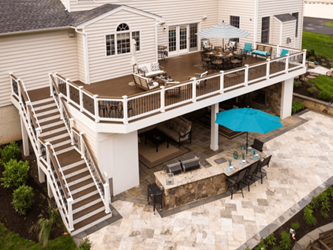
Windows
Window flashing can help protect the structure by preventing moisture intrusion. Inspectors check windows to see if they have been flashed correctly. Cracked glass and windows that do not open are common defects.
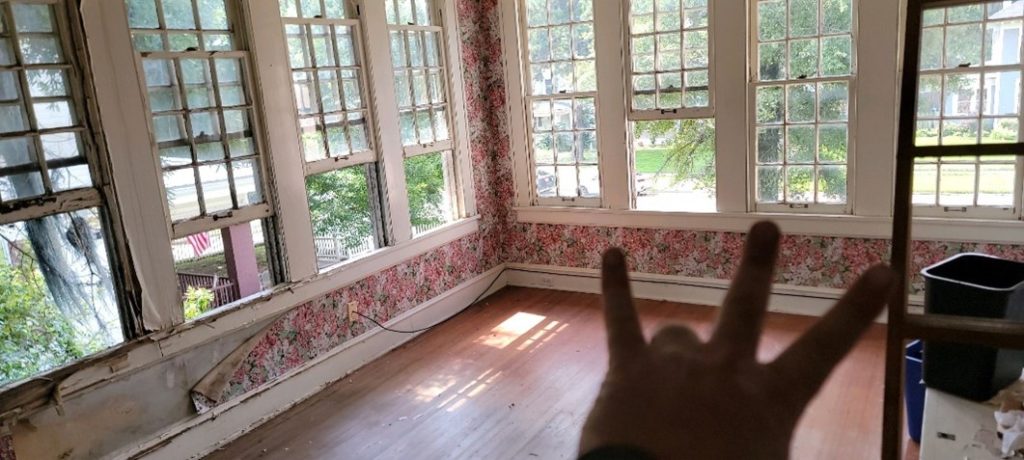
Kitchens
The kitchen has several systems and appliances that inspectors evaluate. Stoves, ovens, dishwashers, refrigerators, exhaust fans, and microwaves are operated to verify they function properly. Common appliance issues are: Stove’s that are missing anti-tip brackets, dishwashers that aren’t properly secured (missing brackets or screws), and dirty filters (exhaust fan, dishwasher, & refrigerator).
Home inspectors also inspect the kitchen sinks, faucets, water supply and drain lines, looking for leaks, proper drainage, and functional shut-off valves. Common issues include: Leaks, corrosion, and accordion style drain lines.
Electrical receptacles are checked for GFCI (a safety device) protection. Inspectors also check the kitchen cabinets and countertops. It’s common to find receptacles missing GFCI protection, cabinet doors that don’t completely close, and cabinets secured with sheet rock screws instead of cabinet screws.
Inspectors check the flooring for damage and soft spots. Cracked tiles, signs of moisture damage, and holes in the linoleum are common flooring concerns.
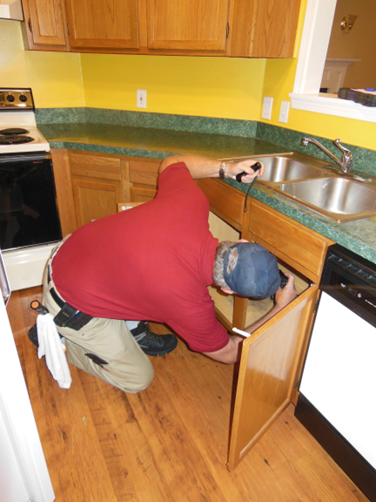
Interior Rooms
Inspecting the interior rooms of a home is a methodical process. Home inspectors examine each room to identify issues that may affect the property’s condition and livability. Inspectors look for visual clues that may indicate issues such as cracks or moisture stains on walls or ceilings. Evaluation of these signs allow inspectors to pinpoint areas that may require further investigation or repair.
Flooring in each room is inspected for signs of wear and tear, cracked or missing tiles or hardwood, and/or signs of water damage. Identification of flooring problems are critical because they can affect both the safety and aesthetics of the home.
Inspectors also test the functionality of lighting fixtures and electrical receptacles in each room. Inspectors check for any visible issues, such as loose or non-functional switches or receptacles. Inspectors also check for the presence of smoke and carbon monoxide detectors. Closets are also inspected for signs of water damage and structural issues. By inspecting so many aspects of each interior room and closet, home inspectors provide potential buyers with a comprehensive understanding of the home’s condition.

Bathrooms
Bathrooms can have a variety of issues and concerns. Inspectors operate plumbing fixtures, such as sinks, toilets, bathtubs, and showers, looking for leaks and functional flow. Common bathrooms concerns include leaks, loose toilets, and missing GFCI protection. Being well informed ahead of time, can save the Buyer from costly repairs later.
Cracked or discolored caulking or grout is another common issue. This is one of the highest moisture areas in the home, and sealants here have to be maintained frequently to protect the home from moisture damage.
Proper ventilation helps prevent moisture buildup, which can lead to mold and mildew growth. Inspectors inspect exhaust fans and windows, ensuring they are functioning correctly, and expelling humid air outside the home. In Louisiana, current standards do not require a bathroom exhaust fan if there is an openable window in the bathroom.

Basements
Most of our Louisiana homes don’t have basements. That’s because there are wetlands and swamps everywhere in Louisiana. 49% of Louisiana is below sea level, so there are places where the water table is at, or close to the surface. Inspectors frequently find water meters here underwater after it rains but a few days later the same meters will be dry; not because of a leak but because of the high-water table. Trying to dig basements in swampy areas just isn’t practical. We protect our homes by keeping them as dry as possible.
If you live in an area that does have basements, inspectors will check them for signs of moisture intrusion. Detection is critical because a wet basement can be a breeding ground for mold, mildew, and structural damage. If moisture is found, there is likely cracking somewhere in the basement’s walls or floors.
Cracks in the basement walls or in the foundation could be caused by settling, soil pressure, or even water damage. Inspectors will check the walls and foundation for any visible cracks and assess their severity. Sump pumps (if present) are checked to determine if they are functional.
Ventilation and proper airflow in the basement are also examined. Inadequate ventilation in the basement can lead to excessive humidity, which, over time can result in mold growth and damage to the structure or personal property. Home inspectors evaluate the presence and functionality of vents and recommend improvements.
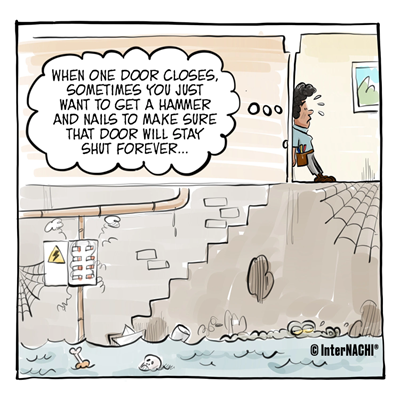
Attics
Attics play a significant role in a home’s ventilation and insulation. Inspectors examine the condition of the attic, looking for proper insulation, signs of leaks, and adequate ventilation. Louisiana inspectors also describe the type and depth of the insulation, as well as the types of attic ventilation present.
Proper insulation is crucial for maintaining a comfortable indoor temperature and for energy efficiency. Over time insulation will settle, and then does not perform as well as insulation that hasn’t settled. Inspectors estimate the depth of the insulation and ensure that there are no areas missing insulation. Inadequate insulation can lead to excessive heat loss during winter and unwanted heat gain in summer, resulting in higher energy bills. Addressing insulation issues in the attic is not always a costly endeavor, but it can bring substantial energy savings over time.
Inspectors also check the attic for signs of moisture damage or leaks. A leaky roof can damage the insulation and the structure and lead to mold and mildew. The quicker a leaking roof can be detected and repaired, the less damage the moisture will cause.
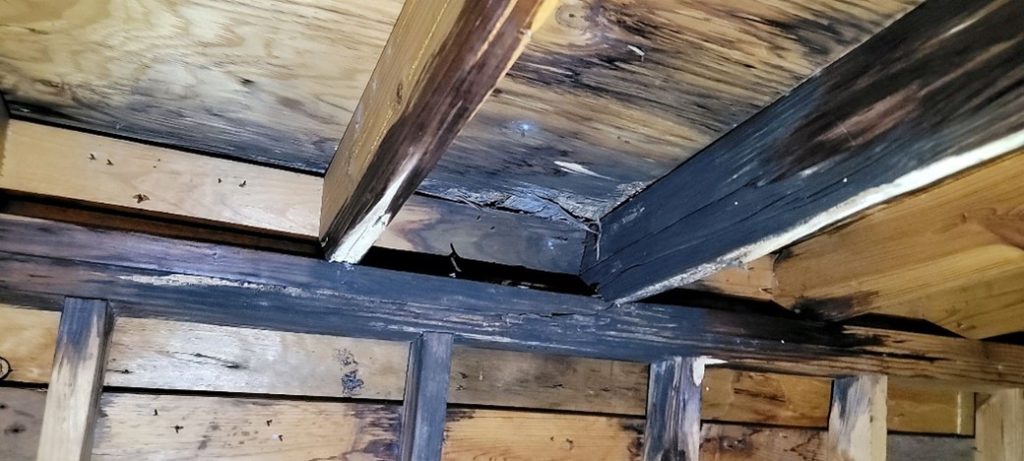
Ventilation is another crucial aspect of attic inspection. Adequate attic ventilation helps regulate temperature and humidity levels, which helps prevent the buildup of excessive heat and moisture. Inspectors examine the type of vents and their condition, ensuring that they are unobstructed and functioning correctly. Attics should have ventilation at the top and bottom of the attic. It’s common to find attics in older homes without ventilation at the bottom. Most of these older homes once had whole house fans (usually in the hallways), but these fans are now obsolete and very few of them are still functional.
Crawl Space
Crawl spaces are an indispensable part of many homes. They allow access to the foundation, the subfloor, the plumbing supply & drain lines, and occasionally even electrical wiring. However, crawlspaces are also the source of many concerns. Many small problems can become major problems if you neglect to inspect the crawlspace long enough.
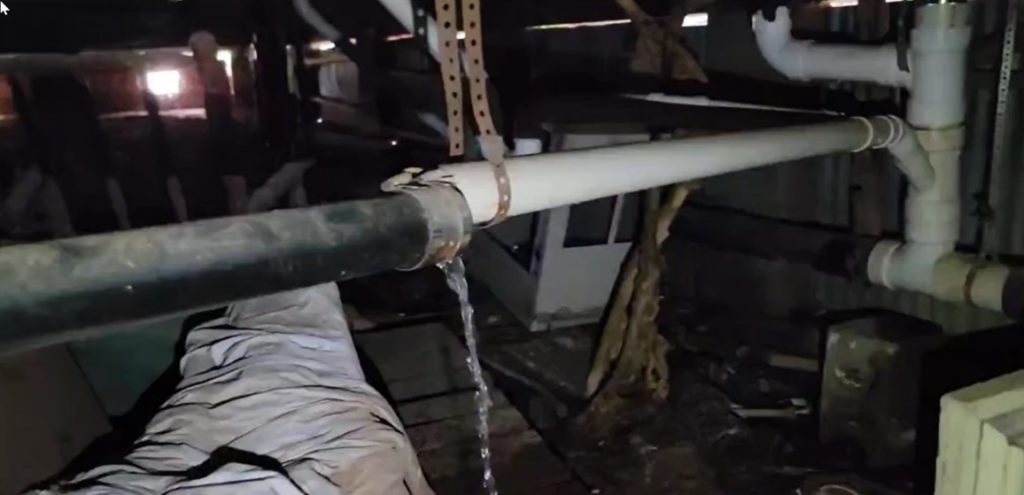
How Often Should I Have the Crawl Space Inspected?
Many experts recommend that homeowners inspect their crawl space at least once every two years, and after major weather events that include flash flooding or heavy rainstorms. Also, if you notice any strange smells coming from your crawlspace or see visible signs of moisture damage or possible mold growth then you should inspect your crawlspace immediately. Doing so may help prevent additional problems and could save you money on future repairs.
The Benefits of Crawl Space
Inspections
Detect Moisture Related Issues
Crawl spaces can be especially susceptible to moisture issues because of the lack of air circulation. If left unchecked, moisture issues can cause wood rot, mold growth, and other problems that can damage the home’s structure. Home inspectors examine crawlspaces for signs of moisture damage allowing homeowners to correct these issues in order to protect the home for further damage.
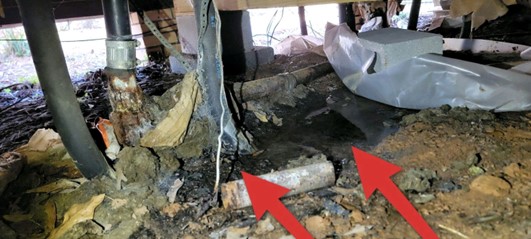
Identify Possible Pest Infestations
Pests such as rodents and wood destroying insects often like to make their homes in crawl spaces, because crawlspaces offer shelter them from predators. Home inspectors are familiar with the typical signs of pest infestations. If any signs of pests are identified, you will be able to treat the home in order to prevent any future damage from those pests.
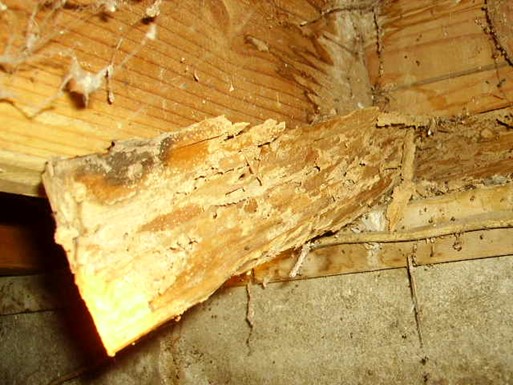
Check for Structural Damage
If your home has a crawlspace, then your home’s foundation likely includes joists, beams, piers, and other components. These components must remain structurally sound over time to protect the home. Home inspectors check for signs of structural damage, which could indicate underlying issues with the foundation or other parts of your home’s structure. Taking action sooner rather than later, can help save you money in the long run and protect your home by preventing further damage.

Improve Air Quality
Crawl spaces often contain high levels of dust and allergens which can be an indication of poor ventilation, which can lead to poor indoor air quality if left unchecked. Having the crawlspace inspected will help determine if there are any visible signs of air quality issues. Your home inspector may recommend adding proper ventilation, or sealing off areas where allergens may enter the home.
There are many reasons to have your crawlspace (and your home) inspected regularly. Finding and correcting crawlspace issues early is usually critical when it comes to mitigating damage, regardless of what caused the damage. Some of the more common crawlspace issues home inspectors find include: inadequate ventilation, cracked piers, moisture damage, and possible wood destroying insect damage.
Doors and Windows
Windows and doors are important components of a home’s structure, energy efficiency, and security. Inspectors check for drafts around windows and doors, which can compromise the home’s energy efficiency. Inspectors look and feel for air leaks to pinpoint areas in need of sealing or weather-stripping. Inspectors also examine the condition of windows and door frames, looking for signs of damage, wood rot, or decay. Identification of such issues is important because it can indicate long-term moisture damage or structural problems.
Handles and locks on windows and doors are inspected for proper function. Confirming that windows and doors can be securely closed and locked, contributes to the home’s safety and security. Inspectors also check the condition of glass panes in windows for any cracks and/or signs of broken seals such as condensation inside the window. Common concerns are doors that don’t latch or lock properly, and windows that don’t easily open.
Electrical Systems
The electrical system is a vital aspect of any home because the electrical system delivers the home’s power. Inspectors evaluate the panel, switches, visible wiring, and receptacles for safety, functionality, and to identify potential issues. In Louisiana (and possibly in some other states), inspectors will describe the type of wiring, service amperage and voltage, and the location of main & distribution panels and report any visible solid conductor aluminum branch circuit wiring.
The heart of this system is the electrical panel, which is the central hub. Inspectors normally remove the panel cover, and look for a variety of issues. Electrical panel concerns are critical because they can pose fire hazards and/or affect the function and performance of fixtures and appliances. A few common concerns are issues like small service (less than 200 amp), over-fusing the A/C breaker, and incorrect types (manufacturer) of breakers.
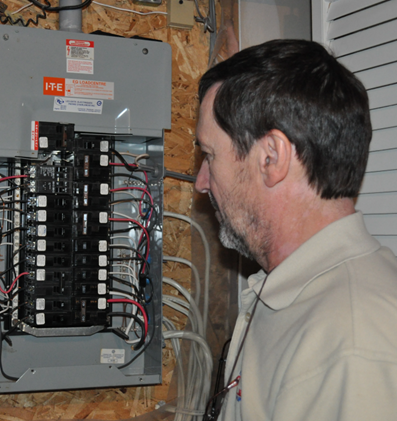
Switches and receptacles are tested for safety and function. Inspectors identify issues such as non-working receptacles, reversed polarity, open ground and signs of arcing or overheating. Inspectors test lighting fixtures and ceiling fans, ensuring that they’re installed properly and functional. In vacant homes, Ground Fault Circuit Interrupters (GFCIs) and Arc Fault Circuit Interrupters (AFCIs) are tested to ensure they provide the necessary protection against electrical shocks and fires. Common problems include issues like: Open grounds, 2-way switches installed improperly, and exposed wiring (wiring not protected by conduit).
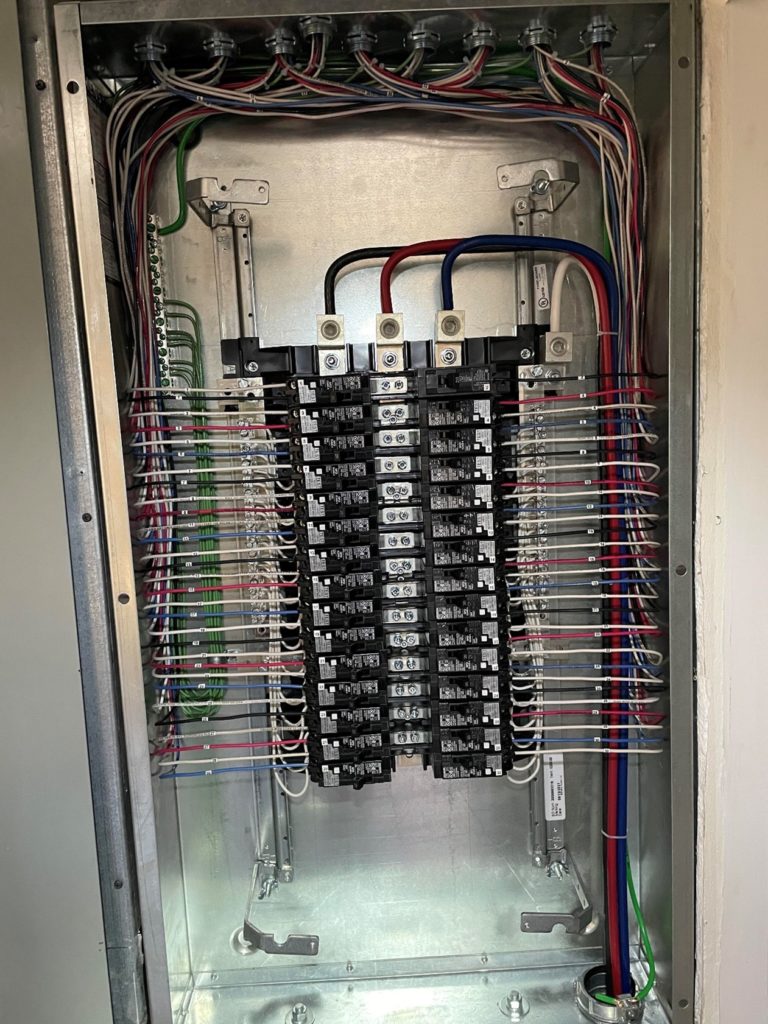
Heating & Cooling Systems
Comfort, air quality, and energy efficiency depend on the HVAC (Heating, Ventilation, and Air Conditioning) system. Inspectors evaluate and describe the type of HVAC system present. Inspectors look for signs of wear, damage, improperly installed components, and corrosion. Inspectors also check to see if the system is producing heat as expected and verify that it appears to be vented properly.
Air conditioning units are also inspected when the temperature is warm enough (above 60F – 65F). Operating the air conditioner during cold weather may damage the air conditioner. Inspectors assess the unit’s overall condition and (when warm enough) it’s function. Identification of issues with the heating & cooling system is crucial, as it affects the home’s comfort and energy efficiency. Often, HVAC units don’t produce cool enough air, which could be an indication of low refrigerant. Other less expensive issues such as: dirty air filters and missing insulation on refrigerant lines are also common.
Ductwork, another crucial part of the HVAC system, is examined for signs of damage, leaks, or blockages. Detection of ductwork issues helps ensure that conditioned air is distributed efficiently throughout the home, improving overall comfort and energy efficiency. Inadequately insulated ductwork is a common concern, usually indicated by moisture stains around supply registers in the ceiling.
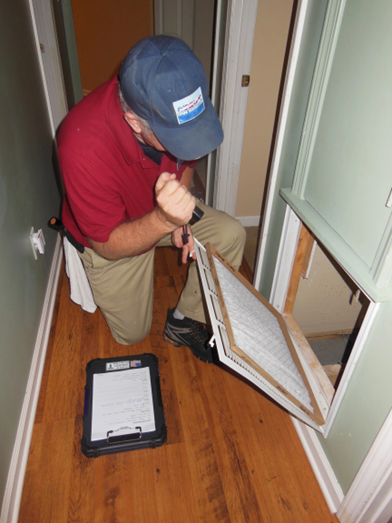
Plumbing
The plumbing system is an intricate, but indispensable network in a home. The plumbing system supplies clean water and disposes of wastewater. Inspectors check for signs of leaks, corrosion, and damage. Water pressure is also evaluated in various fixtures throughout the house, including sinks, showers, and toilets. Inspectors in Louisiana also describe the type of plumbing materials used in both the water supply and drainage system.
Inspectors check the functionality of faucets, fixtures, toilets and sinks. They look for any signs of leaks, loose fixtures or handles, and for installation defects. Drainage systems are inspected, with inspectors checking for outdated installations (such as S traps), slow drains, backups in sinks, showers, and toilets.
Finally, the water heater is evaluated for proper installation and function. The plumbing and ventilation are also checked. Inspectors test the water temperature and look for signs of rust & corrosion. Inspectors often find corrosion at the water heater, as well as defects with the TPR (Temperature and Pressure Relief) valve discharge pipe.

Roof
The roof is your home’s first line of defense against the elements. Inspectors examine and describe the type of roofing material which may be: architectural or asphalt shingles, rolled roofing, tiles, metal, PVC, or other materials. Inspectors look for any signs of wear, impact damage, or missing pieces which can cause leaks which damage the structure. Identification of damaged or missing roofing material is critical as it can lead to moisture intrusion, rot, and structural problems if left unaddressed. Granular loss, impact damage and missing roof covering materials are some of the more common roofing defects.
Additionally, inspectors examine the flashing, which helps seal roof penetrations such as chimneys and vents. They check for improper installation and/or deterioration that may lead to leaks which damage the structure. Common issues here are improperly installed drip edge flashings and loose soffits or fascia trim. Flashing defects could lead to water infiltration which damage the home.

Gutters and downspouts are inspected to ensure that they are clear of debris and that they appear securely attached. Clogged or damaged gutters can lead to water overflow and damage the structure. Missing gutters and downspouts that drain too close to the foundation are common problems.
Inspectors examine and describe the roof’s overall structure, checking for signs of sagging or unevenness. Sagging roofs are often an indication of inadequate bracing, especially in older homes. The ideal time to correct this is typically when the roof covering is being replaced.
The Home Inspection Report
Video Tips for Reading a Home Inspection Report
Start With the Report Summary
The summary page usually focusses on the major concerns, and items that need immediate attention. Summaries may also list, and may even classify and/or color code items as moderate or minor concerns. My report summaries also provide photos with or links to more detailed information about commonly found issues. This can help buyers quickly get a look at the bigger picture, and make a much more informed decision about the house they are buying.
Focus on the Most Important Items
Most buyers try to focus on the most expensive items, and the major systems and components. When these features need repair or service, sellers will often work with the buyer. It’s important to remember that the seller isn’t going to rebuild the house. If the seller wasn’t previously aware of any damage, they usually agree to file an insurance claim which may cover all or part of the repair or replacement cost.
Take Your Time
Read the full report, not just the summary. While the summary is a great place to start, you can find other important information in the full report. Make sure you read and understand the entire report. Most inspectors like to meet with their clients at the end of the inspection if you’re available. This gives them a chance to discuss their findings in person.
What To Do After You've Received Your Inspection Report

Review The Report
Usually, buyers have 2 or 3 days to review the report before negotiating with the seller about who will pay for repairs. When reviewing the report, try to focus on the most expensive items and the major systems and appliances, such as the plumbing, HVAC system, roof, electrical issues, foundation, windows, doors, and water damage. If there is anything you don’t understand, ask your inspector.
Consider Getting Help
You can also discuss the report with your realtor, to help you decide on the next steps. Your realtor or agent can help you with negotiations and advise you on the best strategy. For example, you might: negotiate a seller concession, hold money in escrow to fix problems after closing, or delay closing until issues are resolved. Most clients choose to share their report with their agent. Many agents use built-in report tools like Spectora’s ‘Repair Request Builder’ when preparing documents like the ‘Buyer’s Response’.
Negotiate Repairs
Many buyers present a list of requested repairs to the seller. The buyer and seller may split some or all of the repairs, or one party may be responsible. Sellers often agree to address at least some of the repairs, to keep the sale on track. When inspections uncover major repairs, some sellers might instead negotiate a lower closing price, or give repair credits.

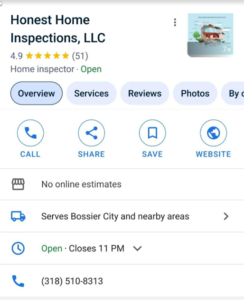
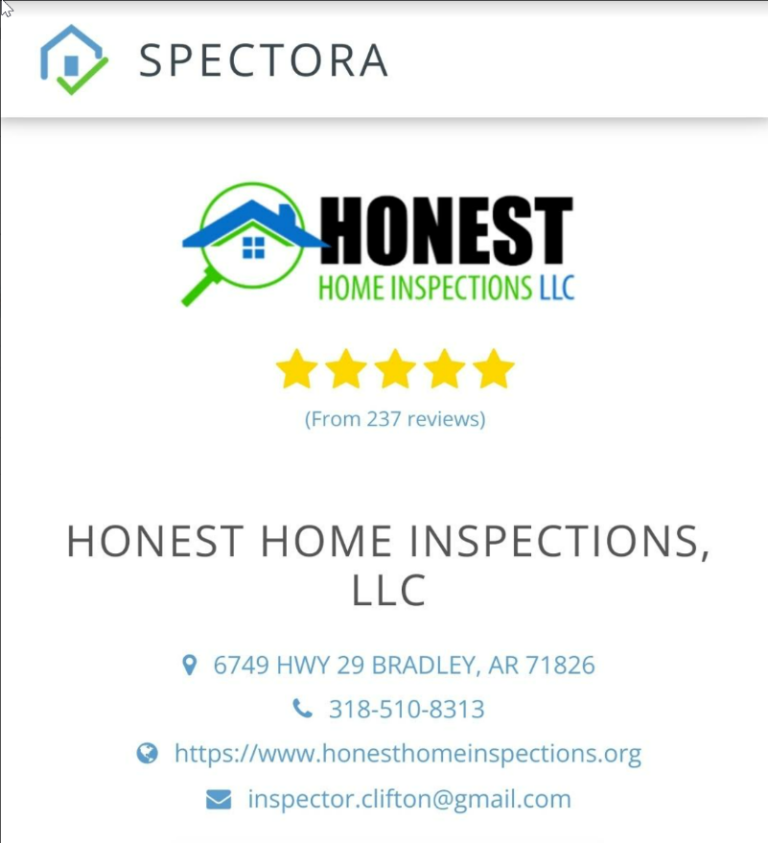
Recent Comments